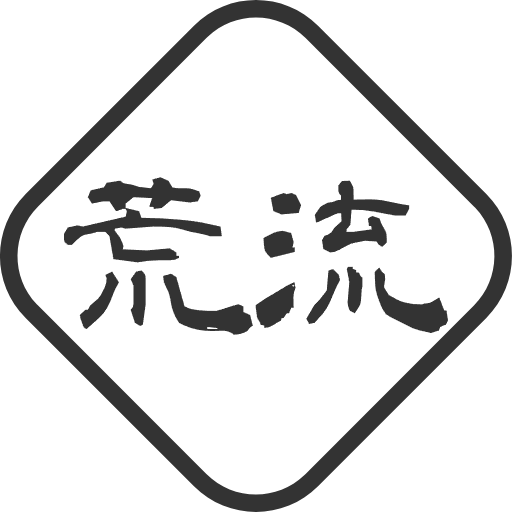享元模式
1. 概念
享元模式(Flyweight Pattern)主要用于减少创建对象的数量,以减少内存占用和提高性能,其运用共享技术有效地支持大量细粒度的对象。
享元(Flyweight)的核心思想很简单:如果一个对象实例一经创建就不可变,那么反复创建相同的实例就没有必要,直接向调用方返回一个共享的实例就行,这样即节省内存,又可以减少创建对象的过程,提高运行速度。
享元模式在Java标准库中有很多应用。比如,包装类型如Byte、Integer都是不变类,因此,反复创建同一个值相同的包装类型是没有必要的。以Integer为例,如果我们通过Integer.valueOf()这个静态工厂方法创建Integer实例,当传入的int范围在-128~+127之间时,会直接返回缓存的Integer实例;对于Byte来说,因为它一共只有256个状态,所以,通过Byte.valueOf()创建的Byte实例,全部都是缓存对象。
因此,享元模式就是通过工厂方法创建对象,在工厂方法内部,很可能返回缓存的实例,而不是新创建实例,从而实现不可变实例的复用。
在实际应用中,享元模式主要应用于缓存,即客户端如果重复请求某些对象,不必每次查询数据库或者读取文件,而是直接返回内存中缓存的数据。
2. 示例
我们将通过创建 5 个对象来画出 20 个分布于不同位置的圆来演示这种模式,由于只有 5 种可用的颜色,所以 color 属性被用来检查现有的 Circle 对象。
我们将创建一个 Shape 接口和实现了 Shape 接口的实体类 Circle ,然后定义工厂类 ShapeFactory ,该 ShapeFactory 类有一个 Circle 的 HashMap ,其中键名为 Circle 对象的颜色,无论何时接收到请求,都会创建一个特定颜色的圆。 ShapeFactory 检查它的 HashMap 中的 circle 对象,如果找到 Circle 对象,则返回该对象,否则将创建一个存储在 hashmap 中以备后续使用的新对象,并把该对象返回到客户端。
客户端类 FlyWeightPatternDemo 使用 ShapeFactory 来获取 Shape 对象,它将向 ShapeFactory 传递信息(red / green / blue/ black / white),以便获取它所需对象的颜色。
创建一个接口
public interface Shape { void draw(); }创建实现接口的实体类
public class Circle implements Shape { private String color; private int x; private int y; private int radius; public Circle(String color){ this.color = color; } public void setX(int x) { this.x = x; } public void setY(int y) { this.y = y; } public void setRadius(int radius) { this.radius = radius; } @Override public void draw() { System.out.println("Circle: Draw() [Color : " + color +", x : " + x +", y :" + y +", radius :" + radius); } }创建一个工厂,生成基于给定信息的实体类的对象
import java.util.HashMap; public class ShapeFactory { private static final HashMap<String, Shape> circleMap = new HashMap<>(); public static Shape getCircle(String color) { Circle circle = (Circle)circleMap.get(color); if(circle == null) { circle = new Circle(color); circleMap.put(color, circle); System.out.println("Creating circle of color : " + color); } return circle; } }使用该工厂,通过传递颜色信息来获取实体类的对象
public class FlyweightPatternDemo { private static final String colors[] = { "Red", "Green", "Blue", "White", "Black" }; public static void main(String[] args) { for(int i=0; i < 20; ++i) { Circle circle = (Circle)ShapeFactory.getCircle(getRandomColor()); circle.setX(getRandomX()); circle.setY(getRandomY()); circle.setRadius(100); circle.draw(); } } private static String getRandomColor() { return colors[(int)(Math.random()*colors.length)]; } private static int getRandomX() { return (int)(Math.random()*100 ); } private static int getRandomY() { return (int)(Math.random()*100); } }执行程序,输出结果: Creating circle of color : Black Circle: Draw() [Color : Black, x : 36, y :71, radius :100 Creating circle of color : Green Circle: Draw() [Color : Green, x : 27, y :27, radius :100 Creating circle of color : White Circle: Draw() [Color : White, x : 64, y :10, radius :100 Creating circle of color : Red Circle: Draw() [Color : Red, x : 15, y :44, radius :100 Circle: Draw() [Color : Green, x : 19, y :10, radius :100 Circle: Draw() [Color : Green, x : 94, y :32, radius :100 Circle: Draw() [Color : White, x : 69, y :98, radius :100 Creating circle of color : Blue Circle: Draw() [Color : Blue, x : 13, y :4, radius :100 Circle: Draw() [Color : Green, x : 21, y :21, radius :100 Circle: Draw() [Color : Blue, x : 55, y :86, radius :100 Circle: Draw() [Color : White, x : 90, y :70, radius :100 Circle: Draw() [Color : Green, x : 78, y :3, radius :100 Circle: Draw() [Color : Green, x : 64, y :89, radius :100 Circle: Draw() [Color : Blue, x : 3, y :91, radius :100 Circle: Draw() [Color : Blue, x : 62, y :82, radius :100 Circle: Draw() [Color : Green, x : 97, y :61, radius :100 Circle: Draw() [Color : Green, x : 86, y :12, radius :100 Circle: Draw() [Color : Green, x : 38, y :93, radius :100 Circle: Draw() [Color : Red, x : 76, y :82, radius :100 Circle: Draw() [Color : Blue, x : 95, y :82, radius :100
廖雪峰的示例
我们以Student为例,设计一个静态工厂方法,它在内部可以返回缓存的对象:
public class Student {
// 持有缓存:
private static final Map<String, Student> cache = new HashMap<>();
// 静态工厂方法:
public static Student create(int id, String name) {
String key = id + "\n" + name;
// 先查找缓存:
Student std = cache.get(key);
if (std == null) {
// 未找到,创建新对象:
System.out.println(String.format("create new Student(%s, %s)", id, name));
std = new Student(id, name);
// 放入缓存:
cache.put(key, std);
} else {
// 缓存中存在:
System.out.println(String.format("return cached Student(%s, %s)", std.id, std.name));
}
return std;
}
private final int id;
private final String name;
public Student(int id, String name) {
this.id = id;
this.name = name;
}
}